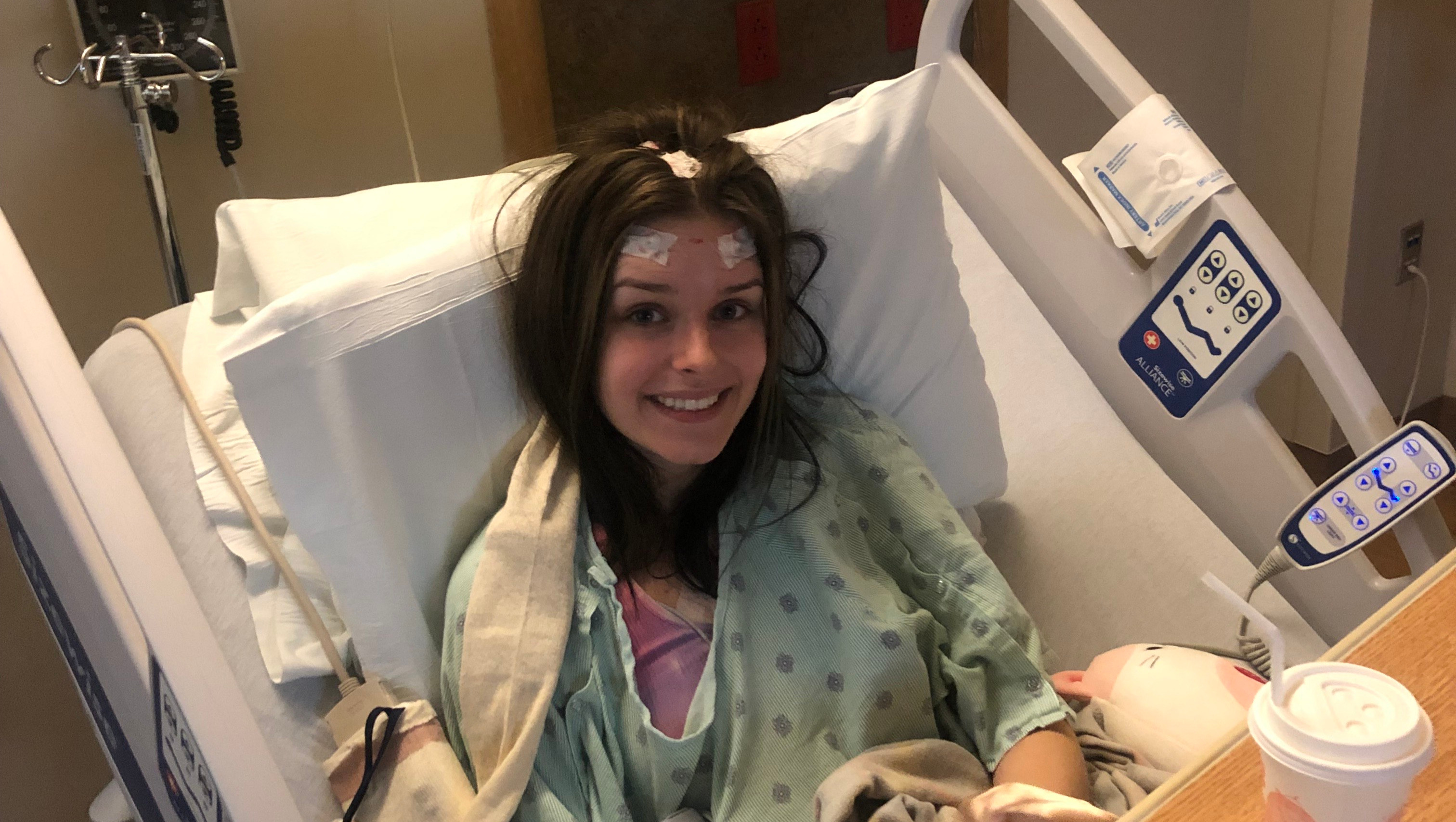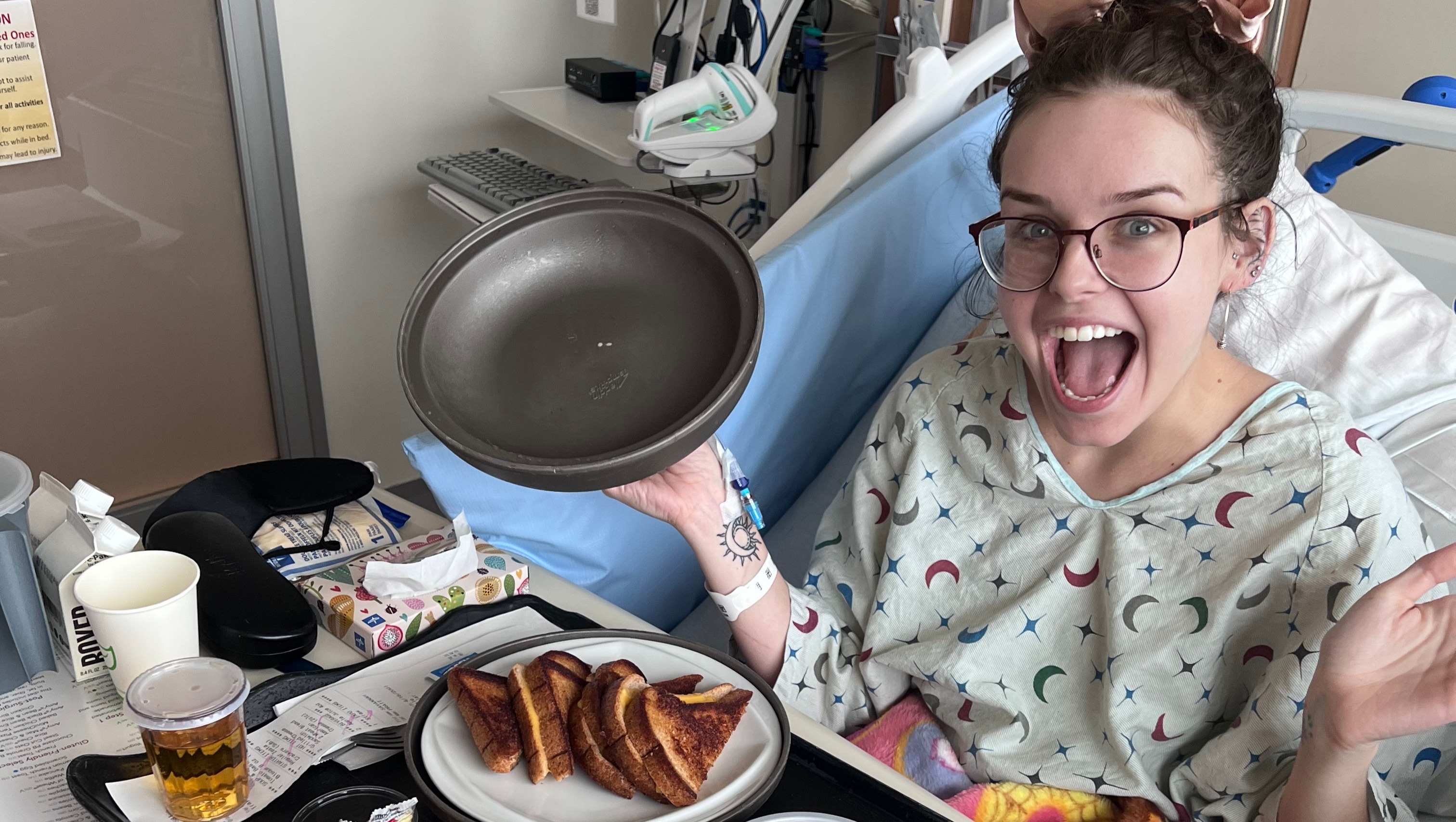
Savannah's Journey
Donation protected




I am Beth, and I am fundraising for my daughter, Savannah! On August 26th, Savannah was a hardworking, healthy, self-motivated, beautiful, 21-year-old thoughtful, loving daughter, girlfriend, educated social media manager, and mother of two (beautiful cats). Within 17 days, she began stuttering, then was unable to speak or work or even be alone due to sudden onset seizures. On the 17th day, she had 62 unexplained seizures (over 3,700 seconds of time spent unable to control her body’s movement)…and had no idea what was happening.
On that 17th day (October 14th), we watched her seize 62 times, averaging a loss of consciousness between 15-90 seconds…we counted each one…and realized something else had to be done! We received confirmation that afternoon that the referral we had to Stanford was denied. We knew the ER here couldn’t help us (see long story below); we knew these seizures and her symptoms were getting worse; we knew this had progressed rapidly from stuttering to not being able to speak, to having seizures, to who knows what else was next.
On Saturday, the 15th, we knew what we had to do…we packed up and headed to the Stanford ER. They were outside of our Network of providers, but it didn’t matter. I couldn’t watch her have another seizure without having a plan to try and help her. We were seen by the best doctors and specialists in the US and they did not disappoint. They admitted her, hooked her up to another EEG with full video monitoring and watched her closely overnight. By 1:30 pm the next day, we had a diagnosis. Functional Neurological Disorder – FND or sometimes referred to as Conversion Disorder.
What is FND?
I didn’t know either, and most doctors are still in the dark about it. The easy answer is that her hardware is fine, but her software has a glitch.
Someone with FND can function normally; they just can’t at that moment. Their brain cannot send and receive signals properly, and there is a disconnection in the function of the lobes and emotional processing. Memory, concentration, cognition, and the processing of sensations also can be affected.
FND causes real symptoms that significantly interfere with how you function and cope with daily life. If you have FND, your unplanned movements and symptoms occur without you consciously starting them and are inconsistent and distinct from symptoms that are intentionally produced. FND can involve any part of your body. Symptoms may appear suddenly, increase with attention to them, and decrease when you are distracted.
All funds donated will be used for medical bills (not covered by insurance / out-of-network expenses), noncovered medical equipment, travel expenses to and from Stanford, and general bills as she cannot work.
Where is she now?
Savannah is still a self-motivated, beautiful, 21-year-old loving daughter, girlfriend, and mother of two (beautiful cats) who has FND and is fighting every day to get her old life back. She gets up every day and continues to have an amazingly positive attitude. Although we don’t know what the future holds, we are tapping all resources possible to give her the best possible chance of returning to a normal life. The head of neurology at Stanford gave her the FND clinic referral we were hoping for; we will be getting her into Cognitive Therapy and have a plethora of other tests that need to occur as we continue to rule out other secondary issues. We don’t know how long she will be out of work or how much her medical bills will end up costing, but we know that we will do what it takes to get her the care she deserves.
Back Story – Prior to the seizures starting
This is a journey no one expected, wanted, or ever thought possible. Savannah woke up like it was any other day, proceeded to get ready for work, taking care of her two cats (Ziggy & Greyson), and then it began. Her words didn’t come out of her mouth like normal. She had never stuttered a day in her life until now. We went to the Emergency Room (ER) that evening, where we spent 7 hours. By this point, she had brain fog, stuttering, headache, eye pressure and inability to focus. Her diagnosis was anxiety and stuttering, and she was told to follow up with her primary care doctor.
Three days later, she couldn’t speak at all…just like that, no words would come out. At this point, we were starting to get worried as we started to see eye fluttering, unusual neck movements and hand tremors, but we were reluctant to go back to the ER, so we waited.
A few days later, we were back in the ER after she had gone in for a pulmonary test that ended with the Emergency Room rapid response team being called to help her. This time, the ER performed a functional MRI of her brain, an EKG and echocardiogram of her heart, and an EEG to watch her brain movement. They kept her for two nights and ultimately discharged her, indicating everything seemed normal and we should probably try going to Stanford if she continued to have these symptoms. No reason for her stuttering, inability to speak, hand tremors, brain fog, uncontrolled eye-rolling, sensitivity to light, headaches, etc.
On the evening of her discharge, a new and worsening symptom started – unexplained seizures! Nothing can ever prepare you for watching your daughter have a seizure…even one is too many. Our lives changed entirely between that first seizure on October 6th and October 14th. These seizures worsened in duration and frequency, and she could not work, drive, or be independent. When she wasn’t having a seizure, the headaches and brain fog prevented her from doing everyday things. I have had to work more from home, her stepdad took a leave from his job, and we all had to learn how to protect her from harm when these seizures happened.
If you have continued this long, we appreciate it. If you cannot donate, please keep her/us in your thoughts and prayers.
Organizer and beneficiary
Beth Miller
Organizer
Roseville, CA
Sven Miller
Beneficiary